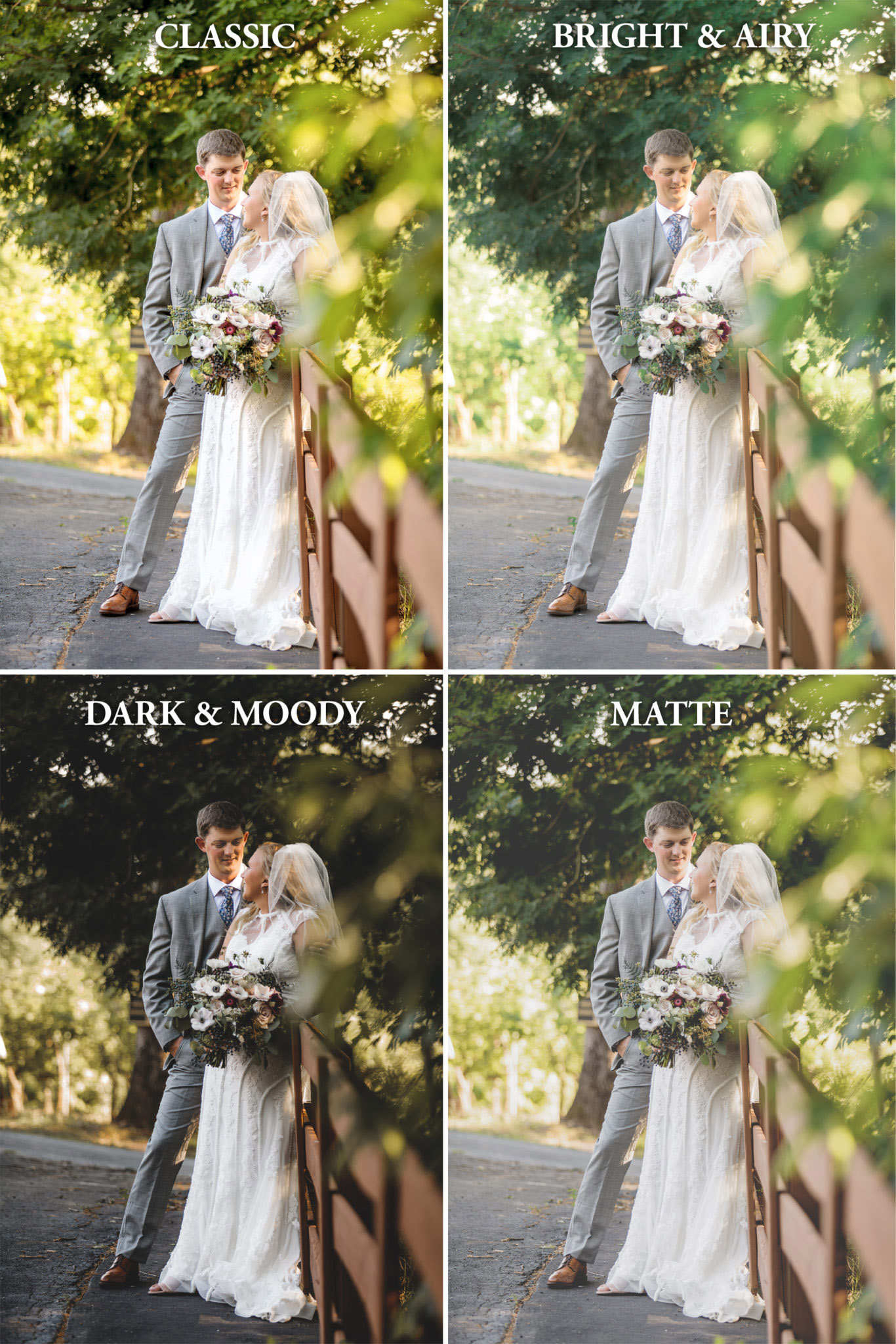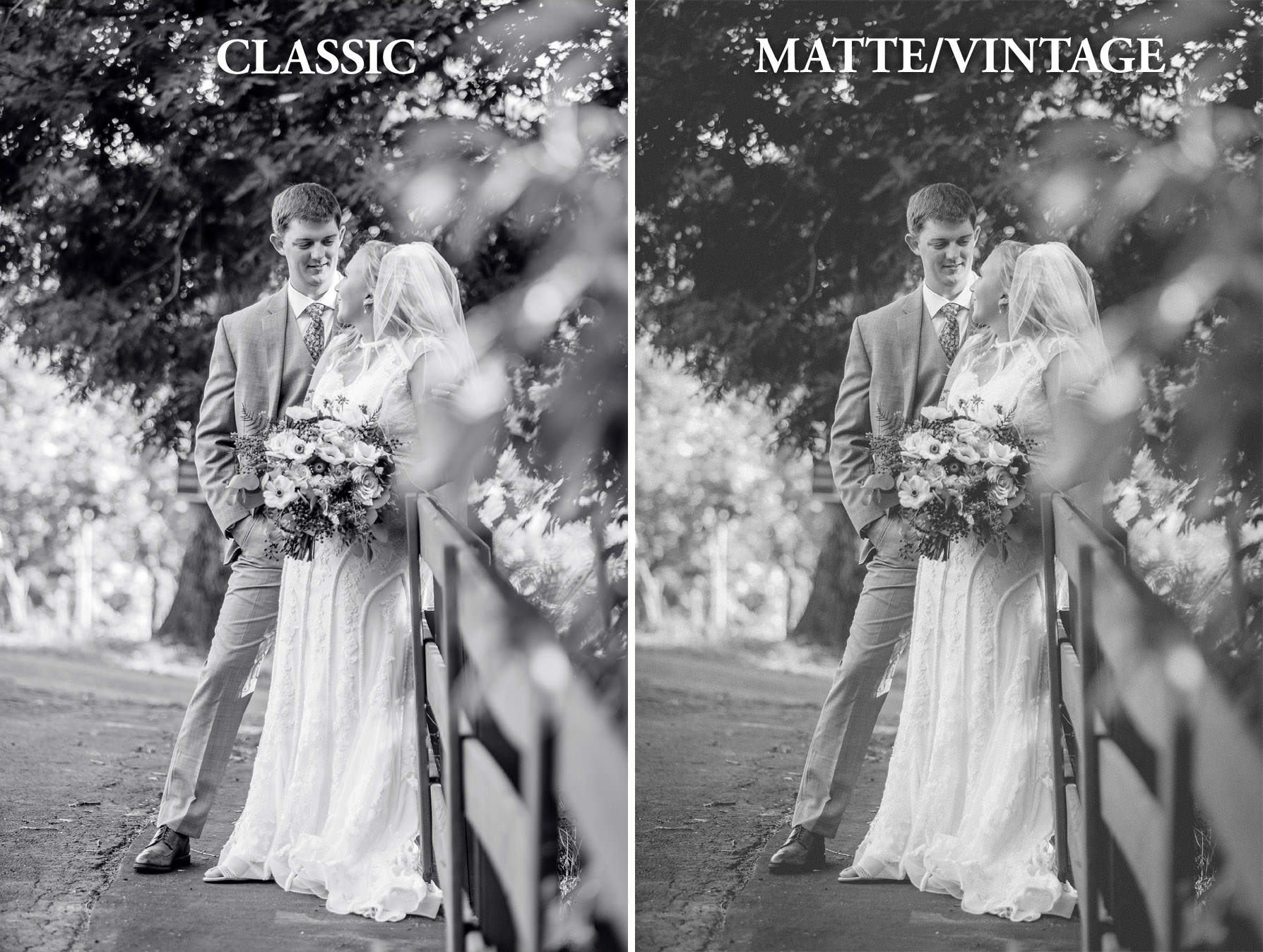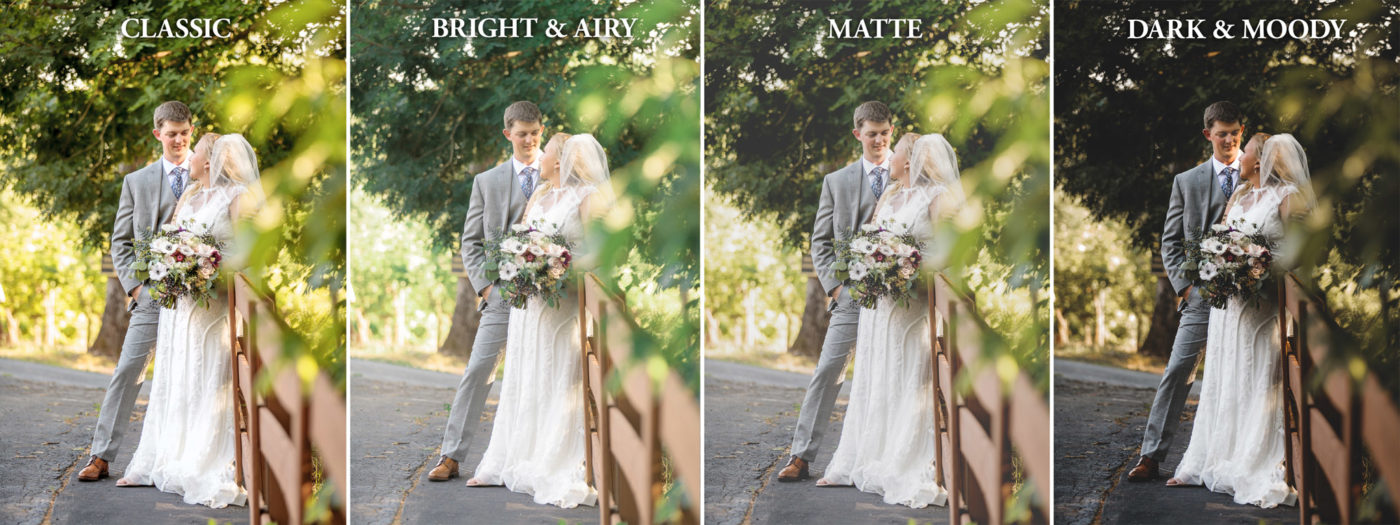Wedding Photography Editing Styles and Trends
I’ve been photographing weddings since 2004, and over the years it’s been interesting to watch the industry transition from film to digital (and even back to some film again.) With film, the photographer’s choice of the actual brand & type of film primarily determined the finished look. Once we sent our film off to the lab, there was little editing that we could perform without scanning and then manipulating the digital file. With the conversion to digital, we have more control over our images than ever before!
That being said, I have seen a lot of trends come and go over the years. Some photographers choose to change their style, whereas others have their own defined style that rarely wavers. How do you choose which “look” is right for your wedding photos?
When you started looking for your wedding photographer, you most likely began by going online and looking at website portfolios and Instagram feeds. (Thank you for visiting ME, by the way!) Today, there are a few trends that you’ll probably see alongside the more classic, film style. I’ve included a few of the more popular examples as well as some descriptions so that you can determine which look is right for you.
And while many of us can edit in all of these styles, we generally have an “eye” for what we personally like. I highly recommend looking for a photographer who not only shoots in a style you like (more on this later!) but also edits in a style you like. And don’t forget that trends are often just that… trendy. So be mindful that the style you love now may not be the style you enjoy looking at 10 or 20 years from now.
Color Editing Styles

Classic
The Classic editing style most resembles the look of classic color film. While there are certainly some variations, Classic editing has a good range of tones from bright white to solid black, a medium level of contrast and accurate color tones. It’s also equally beautiful on bright, daylight scenes and darker reception rooms. If you like an image that is pretty true to what you would see with your own eyes, this is a good style to choose.
This style is closest to the way I like to edit my photos. I have a background shooting film & I feel like this is a timeless look that will never go out of style. Depending on the colors and lighting, images may look a little more light & airy, or they may be bold & vibrant. Every photo shoot is slightly different, but a Classic editing style looks great on every image.
Bright & Airy/Light & Airy
Also known as “Light and Airy,” this soft, romantic style has become very popular in the wedding industry over the past decade and does not seem to be fading in popularity anytime soon. This editing style is true to its name… images are often brightened by +0.5 to +1.0 stop above normal, resulting in a brighter image overall. Contrast is usually less than the Classic style, and colors are shifted toward peachy/orange and minty green/blue pastel tones. The overall image may seem “cooler” in tone with more blues & greens rather than “warm” with yellows & oranges. Colors are also slightly under-saturated and will not be as vivid or “pop” as they would in the Classic style.
One thing to look out for: as the image is brightened, detail may be lost in the brightest part of the image, so you may not see as much detail in white areas of the image. This seems to be something that people either hate or don’t seem to mind, so be sure you see some examples before choosing this style. It may also be a challenge to blend a Bright & Airy style applied to portraits taken early in the day with the more dramatic lighting we often see in dimly-lit receptions. If you are looking for a photographer who strictly uses this style, make sure you view an entire wedding gallery so you can see how the entire day looks when edited in this style.
Matte
The Matte look is similar to Bright and Airy in that it has a lower contrast level and less saturated color tones. The black & dark shadow areas are bumped up to more of a gray tone, and whites may be slightly darker than pure white. This look gives a soft, almost vintage feel and can be further enhanced by adding some film grain to give even more texture to the look. The Matte editing style can be used on B&W images as well as color, as you’ll see in my black & white examples below.
Dark & Moody
Dark & Moody editing is probably the latest trend in the wedding photography industry, and it’s a very distinctive style. There is a wide variation within this style, but overall it emphasizes darkened shadows, highly saturated earth tones (oranges, reds, and golden yellows), and desaturated greens and blues. Some styles have heavier contrast between the dark & light areas throughout the image, and my example above shows the more extreme version of this style. Personally, I find this style to be a bit too dark & brooding for my own taste and I don’t usually use it in my own editing.
Black & White Editing Styles

Black & White Options
There are probably just as many B&W editing options as there are color, so I’m only showing a couple of examples here. The more Classic film edits will have a lot more contrast with richer blacks and brighter whites. Images are bolder and may or may not have some film grain/texture. They are often sharper and more detailed than images with a more Matte appearance. The Matte style is softer with less contrast. Blacks are usually brightened to more of a dark gray tone and whites may be just slightly darker than pure white. This gives a softer, more vintage feel to images. I use a mixture of both styles depending on the setting, lighting and overall mood of the wedding I’m shooting.
Final Thoughts
Hopefully these few examples of wedding photography editing styles has given you a little more insight as to what to look for when choosing your wedding photographer. While most of us can edit in a variety of styles, we do have our own personal preferences so it’s important to look for a photographer whose aesthetic most matches your own. If I can answer any questions, or if you’d like to talk to me about photographing YOUR wedding, I’d love to hear from you!


